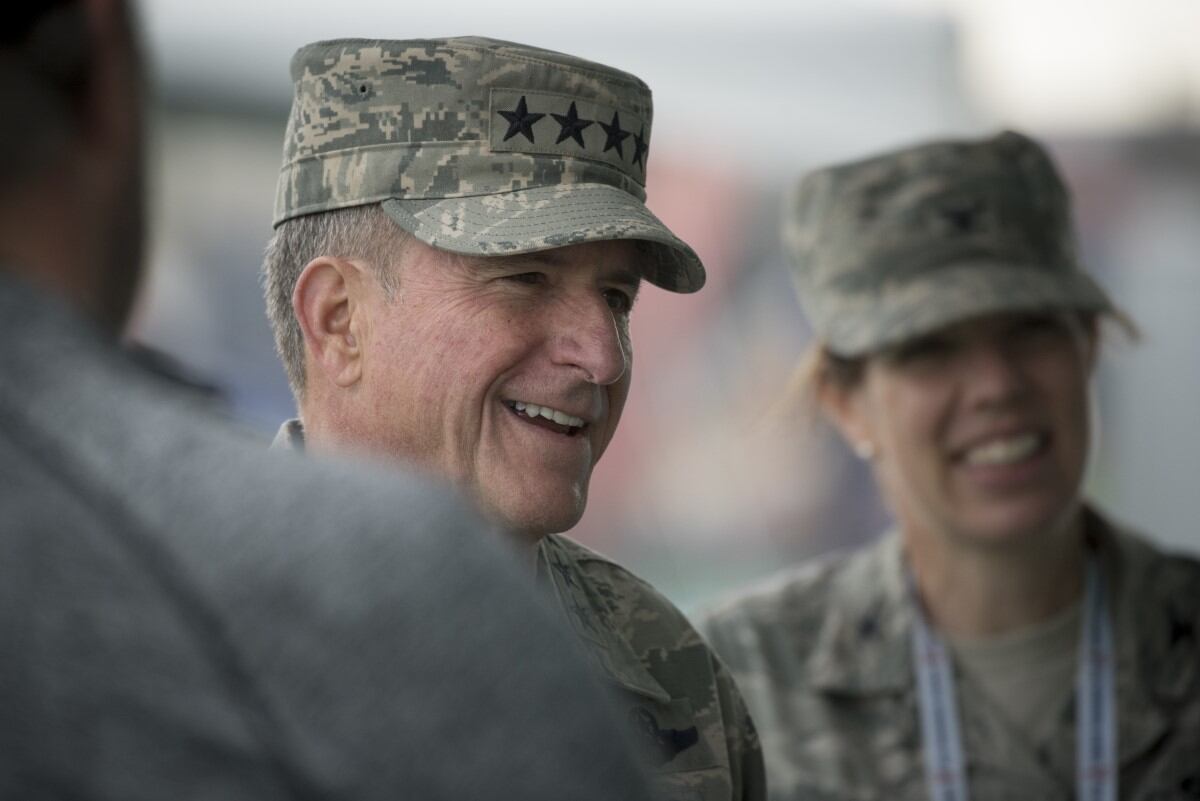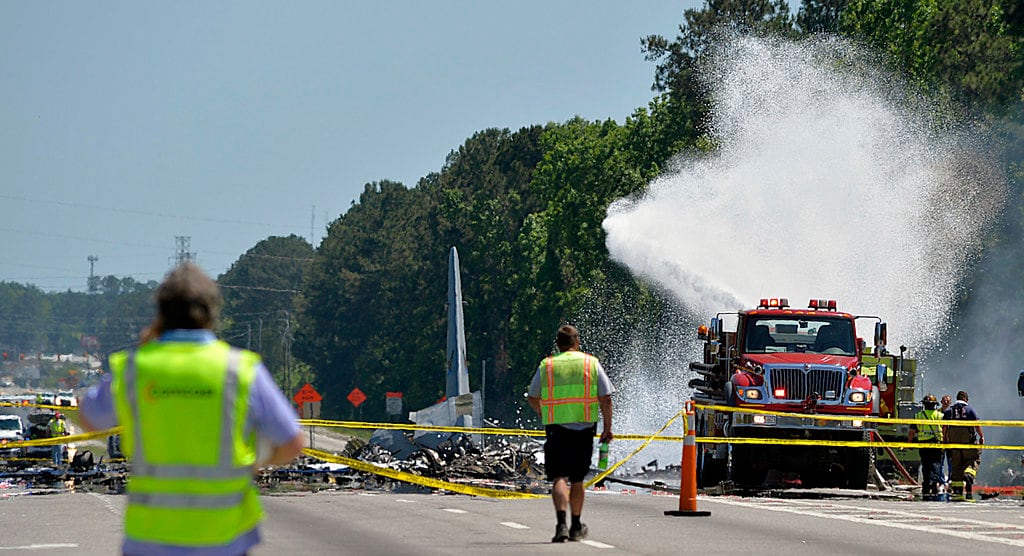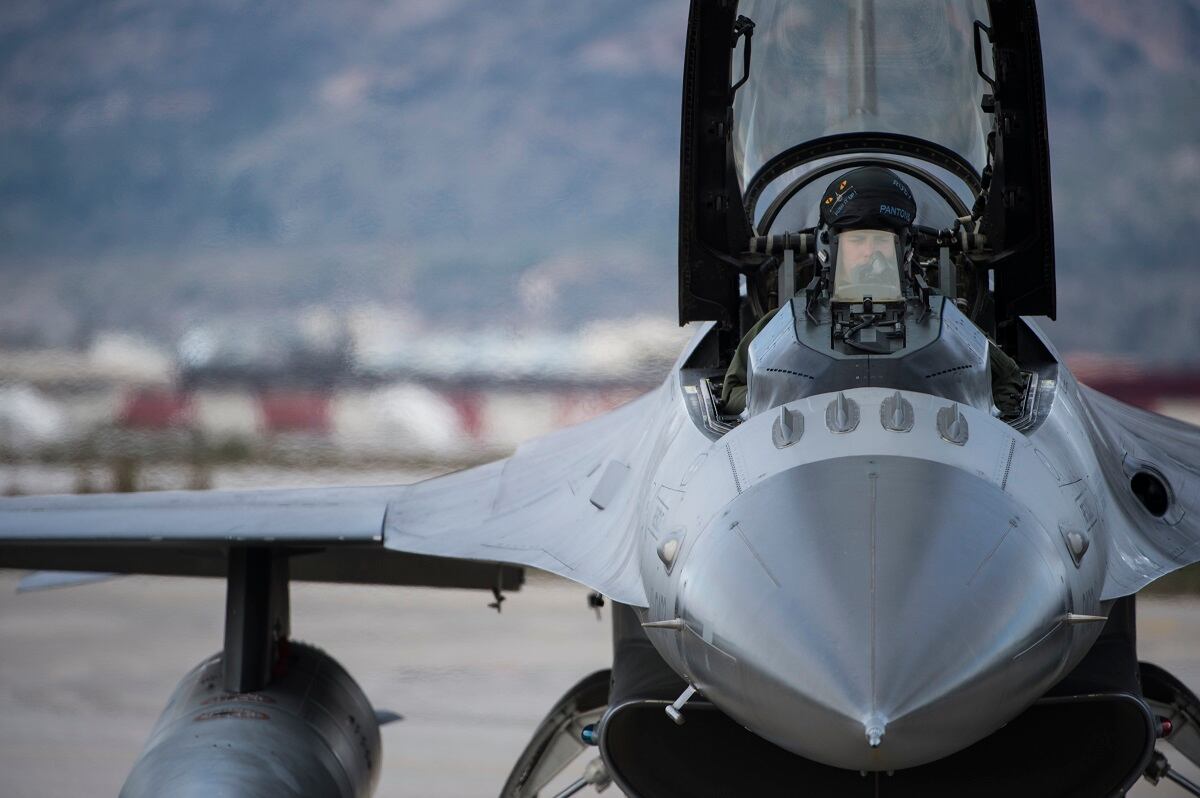COLORADO SPRINGS, Colo. ― The Air Force has finished the first wave of one-day safety stand-downs of flying and maintenance wings.
The stand-downs were ordered in the wake of a string of alarming aircraft mishaps and crashes.
Now, Chief of Staff Gen. Dave Goldfein said, the service is starting to comb through all the data collected during that operational safety review to try to find answers on what may be causing the recent mishaps ― and how to stop them.
“We can’t afford to lose our treasure, and our treasure is our airmen, first, and our aircraft and weapons systems our nation relies upon,” Goldfein said in interviews June 2 and 3 during his trip to the Warrior Games at the Air Force Academy in Colorado Springs. “I’m really hopeful that we’ll get some really good results out of this.”
But Goldfein is confident that while the recent string of mishaps is alarming, they do not amount to an aviation crisis.
Instead, he feels the Air Force is seeing a relatively normal number of mishaps, occurring in a short time frame.
“No, not at all,” Goldfein said when asked if he thought the Air Force was facing a crisis. “If you take a look at the overall numbers, we’re not that far out of whack. It’s a time issue, it’s not a numbers issue. I’ve not seen anything that would indicate to me that we’re in a crisis mode.”
A Military Times analysis of aviation mishap data across all services found that the Air Force’s mishap rate hit a seven-year high last year. That was driven by an increase in low-level “Class C” mishaps.
While Class C mishaps are not fatal and cause damage that is less expensive than the more alarming Class A and B mishaps, experts say that they are still worrisome, and could point to worse problems developing down the road.
Goldfein has also ordered a review of Class C mishaps, the Air Force said in April.
RELATED
Aviation in Crisis
The Air Force in recent months has seen a series of tragic, fatal aviation accidents.
Last month, nine airmen died when a Puerto Rico Air National Guard WC-130 crashed. Seven airmen died in a Pave Hawk helicopter crash in western Iraq in March, and a Thunderbirds pilot died during training when his F-16 crashed in April.
Data also show that all services ― not just the Air Force ― have already recorded the most fatal aviation accidents in six years in fiscal 2018.
And though the fiscal year isn’t yet finished, all services have already seen the mishap-related deaths of 35 military pilots and crew, as many as were killed in fiscal 2016.
Goldfein said that his decision last month to order all flying and maintenance wings ― active, Guard and Reserve ― to completely stand down for a day was motivated by his “gut instinct,” rather than a particular data point suggesting a broader problem.
“My gut instinct just said, we’ve got too many things going on,” Goldfein said. “It’s been a while since we’ve taken the time to pause and take a look at our operations.”

During those one-day stand-downs, wings were ordered to hold forums with their airmen to find problems that could lead to future mishaps or unsafe conditions.
Active-duty units, which had a May 21 deadline, have finished their stand-downs, Goldfein said.
Guard and Reserve units, which assemble more infrequently and needed more time to gather all their airmen, have until June 25.
The Air Force gathered vast amounts of data “inputs” during those stand-downs, Goldfein said. And now that those units have passed that data up the chain, he said, the Air Force is analyzing them to try to spot trends that could hint at the causes of these problems.
RELATED

“As we analyze the data, my expectation is that we’ll then look at what actions we would like to take Air Force-wide, if any,” Goldfein said. “Are there actions we want to take within a specific major command that are more unique to that particular mission set? What are those things that we want to do at the wing and squadron level?”
But, he said, it’s still too soon to tell what, if anything, the wings have uncovered.
And even if nothing comes from the data collected, Goldfein said the stand-down was still worthwhile.
“Sometimes, there’s value in just taking the time to have the discussion,” Goldfein said.
Goldfein said he wanted to give commanders plenty of leeway to steer the discussions where they felt was most productive.
“I start the discussion with, ‘Hey commanders, I completely trust you,’” Goldfein said. “’You know your mission better than I do. Here are a couple of questions I’d like you to consider, but this is your day.’”
“I am sensitive to too much top-down direction,” Goldfein continued. “I’m more focused on what happens when the rubber meets the ramp. Because they’re going to have the most sense of what’s going on, as we go forward.”
Stephen Losey is the air warfare reporter for Defense News. He previously covered leadership and personnel issues at Air Force Times, and the Pentagon, special operations and air warfare at Military.com. He has traveled to the Middle East to cover U.S. Air Force operations.




